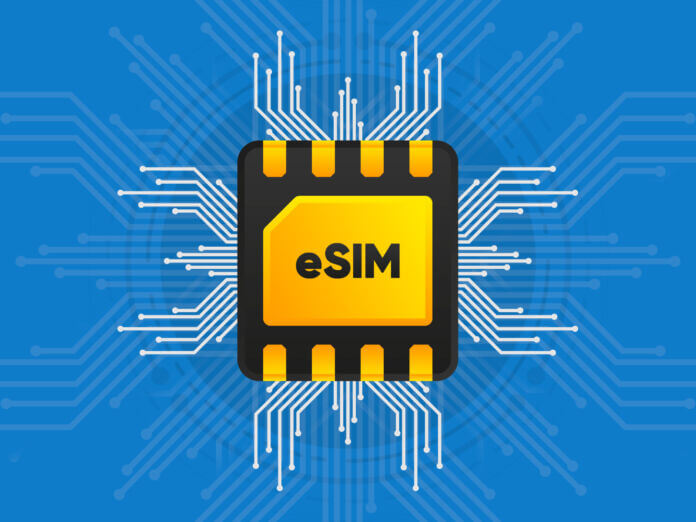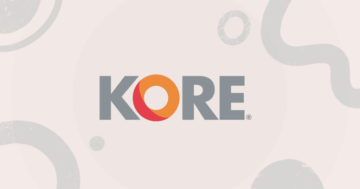
There are plenty of reasons for manufacturers of cellular IoT devices to switch to eSIM. Compared to traditional SIM cards, eSIMs take up much less space on your device. They’re more secure than removable SIM cards. They’re more durable. They can even help extend the battery life of devices.
Most importantly, however, eSIM cards support remote SIM provisioning (RSP). The benefits of RSP make eSIM the future of cellular IoT connectivity.
- Remote provisioning allows your devices to switch from one cellular network to another at will. You can control connectivity from the point of manufacture or put that power in the user’s hands.
- This freedom of connectivity is key to future-proofing your products. An eSIM allows you to adapt to new connectivity conditions throughout the lifetime of the device.
- An eSIM allows you (or your customers) to manage network operator profiles over the air. You can manage a massive IoT fleet without physical access to devices.
- Some providers build RSP capabilities into their eSIMs, so you can simply install the module and ship your products—without developing significant in-house expertise.
Even when you let your eSIM provider handle the RSP ecosystem, however, you still need some familiarity with eSIM technology to make the best choice for your products. As we publish, this technology is developing rapidly. Here’s what OEMs need to know about eSIM technology in IoT as we transition into 2024.
Choosing an IoT Module in 2024: Comparing eSIM Specifications
It’s not enough to choose an eSIM module; you also have to know what type of eSIM will work best for your use case.
There are three options for eSIMs in today’s market. Each one is designed to work within a particular deployment architecture and corresponds to one set of technical specifications outlined by GSMA. These are:
- SGP .02 – Remote Provisioning Architecture for Embedded UICC (Machine-to-Machine Devices)
- SGP .22 – Remote Sim Provisioning (RSP) Architecture for Consumer Devices
- SGP .32 – eSIM IoT Architecture and Requirements
The first standard, SGP .02, was released in 2016. This specification was designed for machine-to-machine (M2M) communication through devices that don’t have screens, keyboards, or user interfaces. It’s the default in many industrial IoT systems, and retains its usefulness there—but it has limitations and challenges, especially for use with the low-power wide area network (LPWAN) technologies typically used for massive IoT.
The GSMA designed SGP .22 specifically for consumer devices. That standard dates back to 2017. These specifications are for eSIMs typically used in smartphone devices, and by manufacturers of consumer IoT products (wearables, point-of-sale devices, and fixed-wireless access routers, to name just a few).
The most recent eSIM specification is SGP .32. (To be more precise, the specification was listed in SGP .31, an earlier GSMA publication, which is the Architecture Specification. But SGP .32 provides the technical implementation details for the .31 specification, so it’s the document we’ll consider here.)
This specification debuted in 2023, with some details about the overall technical ecosystem to be released the following year. The initial specification will continue to evolve as more use-cases are added. One example is the hardware requirements for running eSIM in a limited host, where the device only wakes up momentarily.
In other words, eSIM technology in IoT is a new and developing architecture. The SGP .32 specifications bridge the gap between the consumer experience and industrial IoT solutions. In essence, SGP .32 makes remote provisioning as simple as it is on a smartphone, but for IoT systems ranging from smart meters to smart buildings to smart factories.
Understanding What’s New in SGP .32
The GSMA teams that developed the new eSIM specifications were trying to solve specific, real-world connectivity challenges. They designed SGP .32 for enhanced interoperability, so more devices work on more cellular networks—and with more third-party technologies, including AI services.
They also prioritized security, incorporating the GSMA security accreditation scheme as well as external certificate issuers like Verizon, Digicert, and TrustCB.
The team that developed SGP .32 took what works from the consumer specification, and added new elements that optimize massive IoT deployments. Most significantly, the new additions include two architecture entities unique to SGP.32:
- The eSIM IoT Manager (eIM) is a remote fleet manager. This service handles communication with the systems that manage network subscriber identities: a Connectivity Management Platform or Subscription Manager Data Preparation Plus (SM-DP+), which manages operator profiles; and the IoT eSIM (eUICC) in the field.
- The IoT Profile Assistant (IPA) is a utility for remotely managing SIM profiles on the device. It offers simpler control over connectivity. The IPA can be embedded on the eSIM (IPAe). Or it can run on the device (IPAd). That gives OEMs the choice of out-of-the-box functionality or more in-house control. The IPA securely communicates with the eIM for profile lifecycle management and an SM-DP+ for profile downloads.
What does all this mean for OEMs? The new eSIM specifications will future-proof your products while simplifying connectivity, both for manufacturers and end-users. If you’re looking for eSIM modules for a newly designed product, make sure the eSIMs conform to SGP .32 specifications.
That just leaves one question: How do you make the transition from SIM card to eSIM technology in IoT for your existing product lines—or from earlier eSIM specifications to the new IoT architecture?
Transitioning to IoT eSIM Specifications
Maybe you’ve got massive IoT deployments already out in the field. Your choice of eSIM dictates how a device can be used throughout its entire life cycle, so it’s essential to understand the various technologies and trade-offs. How do you start getting the benefits of eSIM technologies that only just became available?
The answer is to find a connectivity partner that specializes in remote SIM provisioning. There are lots of IoT connectivity providers out there, but few of them offer full-spectrum RSP services, complete with GSMA-compliant profile management and hosting. Fewer still support you at every stage of your transition to the new IoT specifications.
Partner with a specialist that offers eSIM technology in IoT along with the back-end systems that make it work—including a lightweight SIM operating system that won’t drain batteries. In short, the best way to navigate the future of IoT connectivity is to work with the experts.
- SEO Powered Content & PR Distribution. Get Amplified Today.
- PlatoData.Network Vertical Generative Ai. Empower Yourself. Access Here.
- PlatoAiStream. Web3 Intelligence. Knowledge Amplified. Access Here.
- PlatoESG. Carbon, CleanTech, Energy, Environment, Solar, Waste Management. Access Here.
- PlatoHealth. Biotech and Clinical Trials Intelligence. Access Here.
- Source: https://www.iotforall.com/esim-is-in-transition-heres-what-iot-oems-need-to-know
- :has
- :is
- :not
- :where
- $UP
- 1
- 2016
- 2017
- 2023
- 2024
- 22
- 31
- 32
- a
- About
- access
- accreditation
- adapt
- added
- additions
- AI
- AI services
- AIR
- All
- allows
- along
- already
- also
- an
- and
- Another
- answer
- architecture
- ARE
- AREA
- AS
- Assistant
- At
- available
- back
- Back-end
- batteries
- battery
- Battery life
- BE
- became
- benefits
- BEST
- between
- both
- BRIDGE
- build
- buildings
- but
- by
- CAN
- capabilities
- card
- Cards
- case
- cellular
- certificate
- challenges
- choice
- Choose
- Communication
- compared
- comparing
- complete
- conditions
- Connectivity
- Consider
- consumer
- consumer experience
- continue
- control
- corresponds
- Customers
- cycle
- data
- Data Preparation
- Dates
- debuted
- Default
- deployment
- deployments
- designed
- details
- developed
- developing
- device
- Devices
- dictates
- do
- document
- does
- Dont
- downloads
- drain
- each
- Earlier
- ecosystem
- elements
- embedded
- enhanced
- enough
- Entire
- entities
- especially
- essence
- essential
- Even
- Every
- evolve
- example
- existing
- experience
- expertise
- experts
- extend
- external
- factories
- Familiarity
- few
- fewer
- field
- Find
- First
- FLEET
- following
- For
- Freedom
- from
- functionality
- future
- gap
- getting
- gives
- got
- handle
- Handles
- Hands
- Hardware
- Have
- help
- here
- host
- hosting
- How
- However
- HTTPS
- identities
- if
- implementation
- importantly
- in
- include
- Including
- incorporating
- industrial
- Industrial IoT
- initial
- install
- interfaces
- Interoperability
- into
- iot
- iot devices
- iPad
- issuers
- IT
- ITS
- jpg
- just
- Key
- Know
- less
- let
- Life
- lifecycle
- lifetime
- lightweight
- like
- limitations
- Limited
- Listed
- looking
- lots
- make
- MAKES
- manage
- management
- manager
- manages
- managing
- Manufacturers
- many
- Market
- massive
- max-width
- mean
- module
- Modules
- more
- most
- much
- name
- Navigate
- Need
- network
- New
- newly
- of
- offer
- Offers
- on
- ONE
- only
- operating
- operating system
- operator
- Optimize
- Options
- or
- Other
- out
- outlined
- over
- overall
- particular
- partner
- physical
- platform
- plato
- Plato Data Intelligence
- PlatoData
- Plenty
- plus
- Point
- power
- precise
- preparation
- prioritized
- Product
- Products
- Profile
- Profiles
- provider
- providers
- provides
- Publication
- publish
- put
- question
- ranging
- rapidly
- real world
- reasons
- recent
- released
- remote
- remotely
- Requirements
- retains
- Run
- running
- scheme
- screens
- secure
- securely
- security
- service
- Services
- set
- Short
- significant
- significantly
- SIM
- SIM Card
- Simple
- simpler
- simplifying
- simply
- smart
- smartphone
- So
- Solutions
- SOLVE
- some
- Space
- specialist
- specializes
- specific
- specifically
- specification
- specifications
- Stage
- standard
- start
- Still
- subscriber
- subscription
- support
- sure
- Switch
- system
- Systems
- Take
- team
- teams
- Technical
- Technologies
- Technology
- than
- that
- The
- The Future
- their
- Them
- There.
- These
- they
- third-party
- this
- three
- Through
- throughout
- to
- today’s
- took
- traditional
- transition
- trying
- two
- typically
- understand
- unique
- use
- use case
- use-cases
- used
- User
- utility
- various
- Verizon
- was
- Way..
- we
- wearables
- WELL
- were
- What
- when
- which
- while
- wide
- will
- with
- within
- without
- words
- Work
- works
- year
- you
- Your
- zephyrnet







